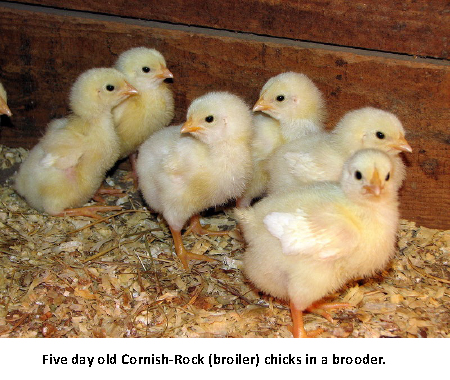“We were writing editorials back in ’15 calling for the use of HPAI vaccinations.”
Art Cullen, Pulitzer Prize-winning journalist
That year, Harrisvaccines, a company out of Des Moines, developed a vaccination for HPAI, but the USDA’s Agriculture’s Animal and Plant Health Inspection Service (APHIS) would not approve widespread use in the poultry industry because of objections by broiler (meat-type chicken) producers who feared China would ban vaccinated U.S. poultry meat. However, China has been vaccinating poultry for two HPAI strains, H5 and H7, since 2017. It is now 2022, and preventive measures against the spread of HPAI continue to fail. When will the U.S. government authorize an HPAI vaccination for poultry in the United States?
HPAI was first detected in China nearly 30 years ago. HPAI led to the death or euthanization of 32.7 million laying hens, turkeys, and backyard flocks in Iowa in 2015. Birds were destroyed to stop the spread of the disease since there is no cure for HPAI. This was considered the worst animal disease outbreak in U.S. history, affecting Iowa’s poultry and approximately 50 million birds in 21 states. It affected not only birds but also jobs. Workers in the entire production chain felt the pinch, including the growers, laborers, processors, distributors, food service providers, and retailers who rely on eggs and meat for employment. In Iowa alone, it lowered the total economic output by over $1 billion, slashing nearly 8,500 jobs.
Biosecurity
2021 and 2022 are fast becoming a replay of the 2015 HPAI pandemic, despite increased awareness of disease vectors and increased biosecurity as recommended by the USDA. Biosecurity is heightened management of the farm and the people who come and go from the facility. It includes increased cleaning and sanitation of the facilities and equipment, better dead bird and manure disposal, isolating the flock from wildlife and outsiders, and farm worker training and conspicuous use of personal protective equipment. The problem: biosecurity doesn’t always work. There are too many gaps.
“Farms are working to minimize contact of their birds with wild birds, but it is very difficult to keep out sparrows, starlings and everything that migrates over these barns.”
Dave Miller, Research and Community Service Director, Iowa Farm Bureau Federation
In the spring, migrating snow geese and other waterfowl fly north up the Mississippi flyway through Iowa, the nation’s largest producer of eggs and the seventh-highest producer of turkeys. Waterfowl land in fields and ponds, mingling with other wild birds and insects, all known vectors for avian influenza.
“[There are] hundreds of barns in the region with open slats taking in [the] spring breeze. How does biosecurity stop a goose from landing long enough to leave its signature just below the awning?” - editorial in the Storm Lake Times.
Despite USDA recommendations to prevent exposure to environmental disease vectors, keeping sparrows and houseflies out of a barn with open slats is highly problematic, if not impossible.
Biosecurity offers two proactive measures.
- First, reduce human contact with flocks using disposable booties and personal protective equipment, disinfecting dips for shoes and delivery vehicle tires, facility isolation, and limiting access by non-essential personnel or visitors.
- Rigorous cleaning and sanitation of poultry houses and equipment come next, along with proper disposal of manure and dead carcasses.
 The final line of defense is reactive, euphemistically called flock depopulation, where an infected flock must be destroyed within 24 hours to prevent the spread of the virus. They are buried or incinerated on-site, causing economic and negative environmental impacts in dealing with thousands of carcasses.
The final line of defense is reactive, euphemistically called flock depopulation, where an infected flock must be destroyed within 24 hours to prevent the spread of the virus. They are buried or incinerated on-site, causing economic and negative environmental impacts in dealing with thousands of carcasses.
Government officials then test other flocks within a six-mile radius of the infected facility. The movement of all human traffic within this ‘hot zone’ is restricted.
“Veterinary experts tell us that raising livestock in a confined setting with strict biosecurity should better protect animals from disease. Rembrandt [a large Iowa egg producer] put in the strictest of protocols but got infected”, asserts Art Cullen. He adds, “Congress basically ignored and froze research funding into animal disease.”
If recurring HPAI sounds out-of-control and expensive, consider this: while rare, there are known cases of humans contracting HPAI from birds. Could this develop into our next zoonotic cross-over pandemic? Why not vaccinate chickens for HPAI and reduce both animal and human risk?
Vaccination
In China, routine vaccination is conducted for commercial poultry for H5N1 HPAI. Culling and euthanization are used in the event a breakthrough occurs. As mentioned in the introduction, Harrisvaccines (now Merck) was awarded a contract in 2015 to provide a stockpile of avian influenza H5 vaccine to APHIS - 48 million doses. Were these vaccines ever used?
Ironically, it was concern over our trading partners, China, Russia, and South Korea, which led to our government’s decision not to vaccinate widely. In 2015, these countries imposed bans on poultry shipments from U.S. regions affected by HPAI. Would a vaccine have broken these embargos? ‘Fraid not. Our trading partners told us that if the U.S. adopted an HPAI vaccination strategy, they would continue the embargo until risk assessments were conducted.
Because they cannot distinguish between an infected or vaccinated bird, trading partners, and domestic poultry producers alike balk at injections.
 According to the USDA’s Chief Veterinary Officer, Rosemary Sifford, they are once again considering vaccination coupled with biosecurity as part of the preventive strategy. Surprisingly, there are some objections in the poultry industry.
According to the USDA’s Chief Veterinary Officer, Rosemary Sifford, they are once again considering vaccination coupled with biosecurity as part of the preventive strategy. Surprisingly, there are some objections in the poultry industry.
Broiler producers grow meat-type chickens raised only 5 to 7 weeks before slaughter, unlike laying hens that may live 11 months or longer or turkeys with an extended grow-out period.
HPAI vaccination in broilers would be cost-prohibitive and unnecessary due to the lower risk for these short-lived birds. Broiler producers don’t want to risk a trade ban, and they have plenty of clout. The U.S. is the world’s second-largest poultry meat exporter grossing $4.2 billion in sales in 2020.
In the meantime, birds continue to contract HPAI. Millions suffer and die or are “depopulated,” bringing economic and environmental hardships to farmers, farm workers, processors, shippers, and distributors. Eventually, grocers and shoppers will see shortages and higher prices. There is no single solution to prevent flu in either birds or humans.
A panacea for poultry may not exist, but an approach using many components layered together to reduce the risk would be a better bet. Vaccinations could be used in conjunction with biosecurity measures, improved livestock facilities, disease-resistant bird strains, genetically diverse flocks, lower bird densities, pay and benefits which reduce farm worker turnover, and up-to-date employee training. More government and private support for research and development are needed to optimize and implement these hurdles. While new HPAI shots would be too late to stop the current outbreak, future widespread vaccine use might help prevent HPAI from happening again and again and again.




